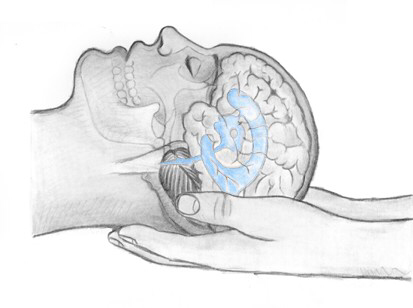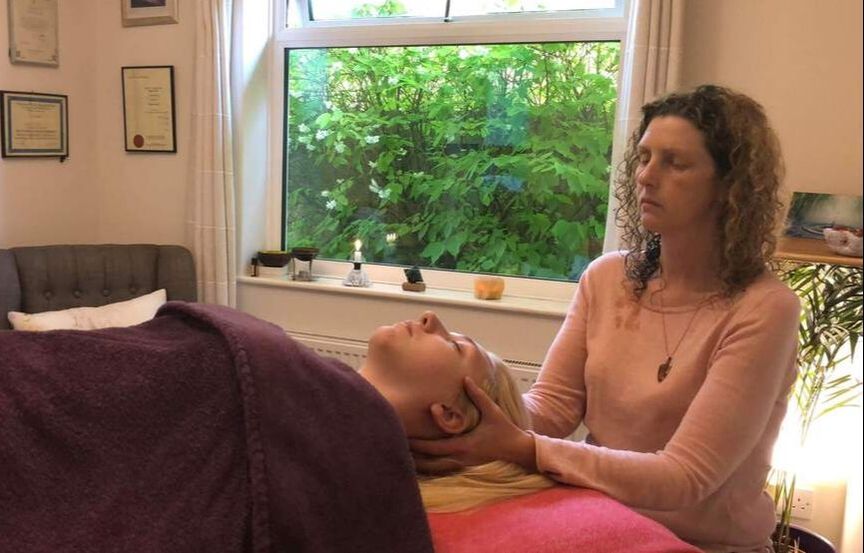Principles of ReikiA Reiki healer's role is to act as a kind of "conduit" for Universal Life Force (aka Rei-Ki) and this passes through to the client, through gentle hand contact on the body. The touch allows for a different energy vibration inside the body that acts like a catalyst for the healing process.
* There are various lineages of Reiki, and some are hands off the body mode. Check with your Practitioner, and ask for the mode you prefer! Principles of Craniosacral Therapy
Summing it all up then......If you are a very private person, and just wish to "experience" healing, then Reiki might be the better option for you. If want to explore collaboratively your body felt senses with your therapist, then maybe Craniosacral Therapy might be better option for you.
If you feel safer with academically qualified practitioners, then Craniosacral therapy might be a better option. If you like predictability and familiarity with the treatment format, then the Reiki treatment will be a more comfortable experience. Common to both modalities of treatment, you can expect to leave feeling relaxed. Sometimes, clients report that they know something has happened but can't quite find the words to describe it. Words I often hear are ; 'balanced", "centred", "free", "opened", "relaxed", "energised" etc., Also, they may see colours, dreamlike images. Often they return reporting that also other aspects of their lives and personal relationships follow that similar ease. . In addition to the above, those who receive Craniosacral add comments like, "Everything went so very still" and "it was like I was moving along the slow waves" or "there was no longer my body just like being in space" When it comes to healing, practitioner intuition and their providing you with a sense of safety could be more important than technical-know-how or any number of certificate of "merits" on their wall. Two Ingredients that are essential to treatment outcomes are ; a) the compassion and b) sensitivity of your therapist, to your specific needs. Please see my next blog "How to Chose a good Practitioner? " Healing is not a miracle but a powerful everyday occurrence available for everyone, whoever you are or wherever you are starting at! So I hope this blog has helped you compare and contrast the two different types of treatments I offer in Warwickshire UK. If you would like to discusss your issues with me, to help you find the best solution, then please call for a free, no obligation, 15 minutes consultation.
9 Comments
Frances
9/7/2017 10:57:34 am
Thankyou for sharing appreciation.
Reply
Anna Whitter
9/8/2018 10:57:42 pm
Great explanation, thak you
Reply
4/6/2019 01:41:26 pm
Very helpful comparison as clients do ask about it. Thank you.
Reply
3/12/2021 06:13:20 am
It helped when you mentioned that Craniosacral therapy is a great option for you if you feel safer with qualified practitioners. My sister mentioned to me last night that she is planning to have a Craniosacral Therapy Treatment for my nephew and asked if I have any idea what is the best option to do. Thanks to this informative article and I'll be sure to tell her that she should consult a trusted Craniosacral Therapy Treatment as they can answer all her inquiries.
Reply
Sandra Dunham
27/3/2022 04:23:23 pm
Jayne,
Reply
14/7/2023 09:29:09 am
Thank you for such a Great post, Your explanation of Reiki therapy is informative and engaging. I appreciate how you clarify that Reiki is not a religious practice, making it accessible to people from all backgrounds. The description of Reiki therapy as a holistic treatment that promotes peace, relaxation, and overall well-being is compelling. The concept of Reiki attunement is also fascinating, highlighting the potential for anyone to learn and benefit from this healing technique. Keep up the great work! For more information, you may also visit https://www.brunotreves.com/single-post/what-is-reiki-healing-therapy
Reply
Leave a Reply. |
AuthorJayne Leak - Reiki Healer and training Craniosacral Therapist. ArchivesCategories
All
|
|
Central Leamington Spa Mon -Sat (with offstreet parking)
Stratford-Upon-Avon (temporarily closed) Email [email protected] Phone 01926 339915 |

Full Professional Insurance Cover with Holistic Insurance Services Membership number: HIS63752. Member of the Craniosacaral Therapy Association (CSTA). Member number: 1601 Company Number: 09730659 |

 RSS Feed
RSS Feed
